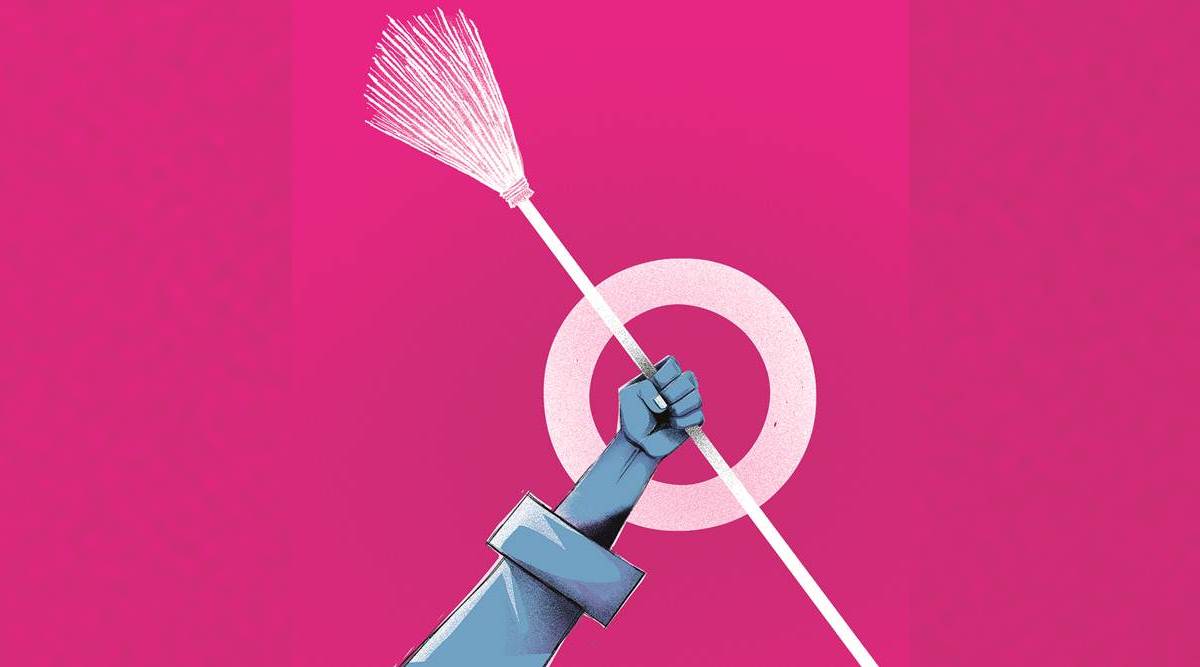 The charge of Dalit patriarchy is now being used to put down any assertion of being Dalit. (Illustration: Suvajit Dey)
The charge of Dalit patriarchy is now being used to put down any assertion of being Dalit. (Illustration: Suvajit Dey)The responsibility of seeking an egalitarian world cannot be undermined by a community that wants an order based on equality, respect and compassion. The burden is heavier on it than those who derive their power from oppression. Thus, even as it organises against caste, the Dalit community must also seek to target its surrogates — gender, sexuality, religion, region, and other forms of harm.
One of the charges held against the community is its patriarchal tendencies and treatment of its women. While the charge is not invalid, it is not original either. Woke politics, that draws on oppression paralympics, rests on finding identities more devastating as a precursor to granting Dalits their legitimacy. The identity of gender is among the first of these identities, followed by sexuality, then region, with class finding its way somewhere. It is quite interesting how and why class gets the least, if not the last, attention in this caste-woke social media cancel-culture. This call of judging one’s humanity based on their gender, sexuality and religion has resonance especially among Gen Z — one of my favourite demographic groups.
This position marks Dalit out as an adjective that can be hyphenated with other moral accountabilities, including patriarchy. But the idea of gender and sex needs clarification. Sex is a biological identity assigned at birth — male or female. Gender is a personal choice, an appreciation of oneself in context of another man, woman, non-gender, or non-binary. Gender is a social construct like race, caste, and other fictitious divisions.
But is Dalit male patriarchy Dalit patriarchy? Portraying it as such makes a conversation and a possible reconciliation difficult. One question to ask here is, is Dalit male behaviour Dalit subjectivity, or does it derive from privileges granted to males in a patriarchal society?
The charge of Dalit patriarchy is now being used to put down any assertion of being Dalit. Both Dalit males and females are reduced to defining their identities in opposition to the other, rather than through their own autonomous selves.
Are there any credible studies to authenticate existence of a Dalit male behaviour? The obsessive focus on Dalit masculinity and male upbringing downplay the very important role of female elders in their upbringing — mothers, grandmothers, aunts, sisters, stepmothers. It is here that we need to examine the conduits of how forms of domination play out.
Several studies done by Dalit women scholars, in particular writer-professor Roja Singh, talk about the uber position Dalit women occupy in rural areas of Tamil Nadu. Dalit matriarchy is, in fact, common among communities with a close relationship to land.
The proposition of Dalit patriarchy also derives its inspiration from the Western canon of feminism as an act against the domination of males. Are Dalit males in as much of a position to dominate as others, or is their domination derived from caste-victimhood locked in vicious Brahminical patriarchy? If that is the case, why not have Brahmin patriarchy, Baniya patriarchy, Kshatriya patriarchy, Shudra patriarchy as a canon of investigation, and not single out Dalit patriarchy as a theory? Dalit patriarchy, in fact, is a summation of caste, class, and gendered beingness.
What can’t be forgotten either is that an urban Dalit has access to Western vocabularies to put across experiences, unlike his or her first-generation rural-dwelling counterpart who is not exposed to similar sensitivities.
However, this is not meant to excuse Dalit males of the charge of patriarchy, but to make them aware of the responsibility of addressing this charge simultaneously and not eventually. One cannot be blind to the suppression of one’s own while positing a universalist agenda. Anti-women behaviour needs to be addressed as a community project.
This article first appeared in the print edition on December 13, 2020 under the title ‘Dalits and the oppressions within’. Suraj Yengde, author of Caste Matters, curates the fortnightly ‘Dalitality’ column